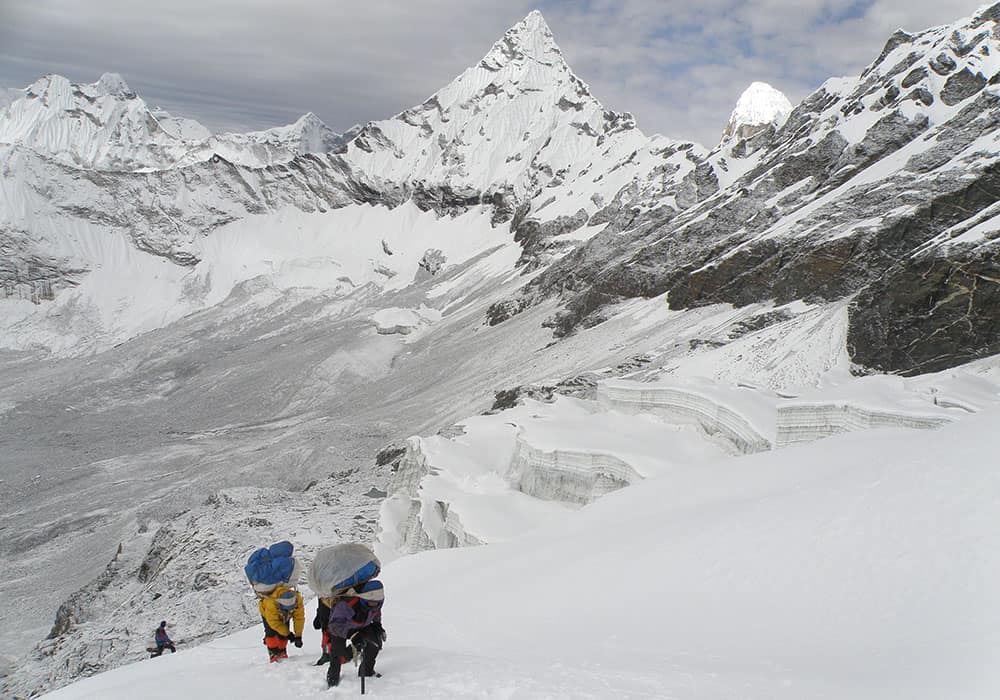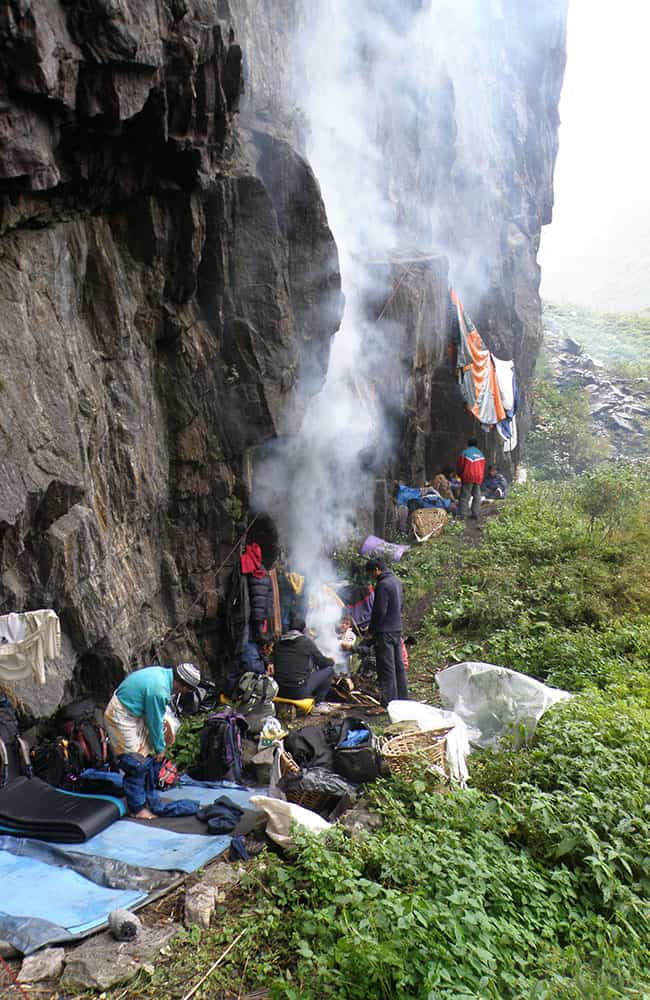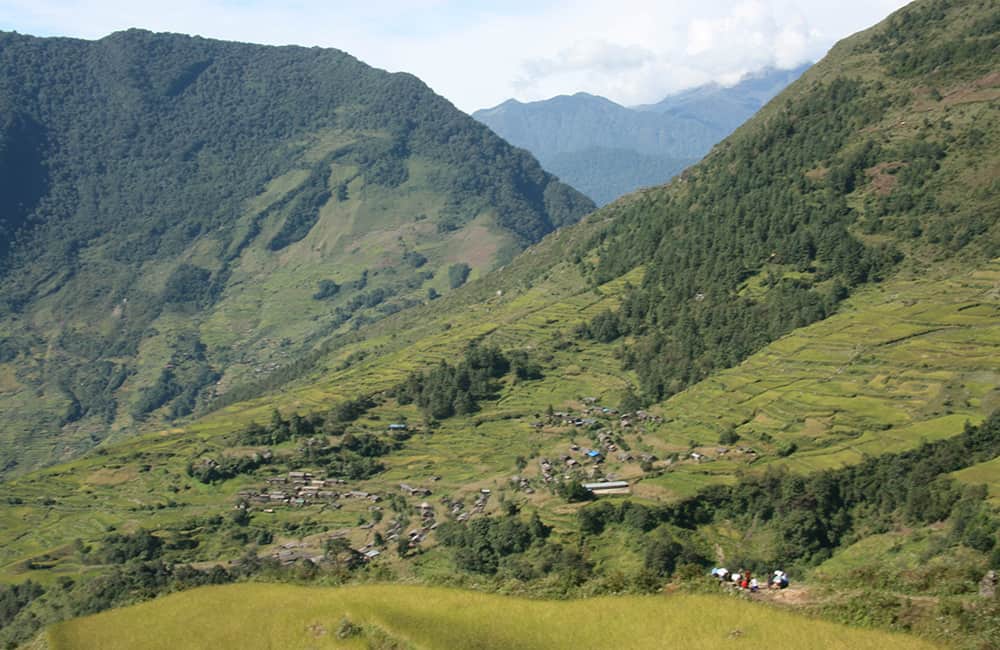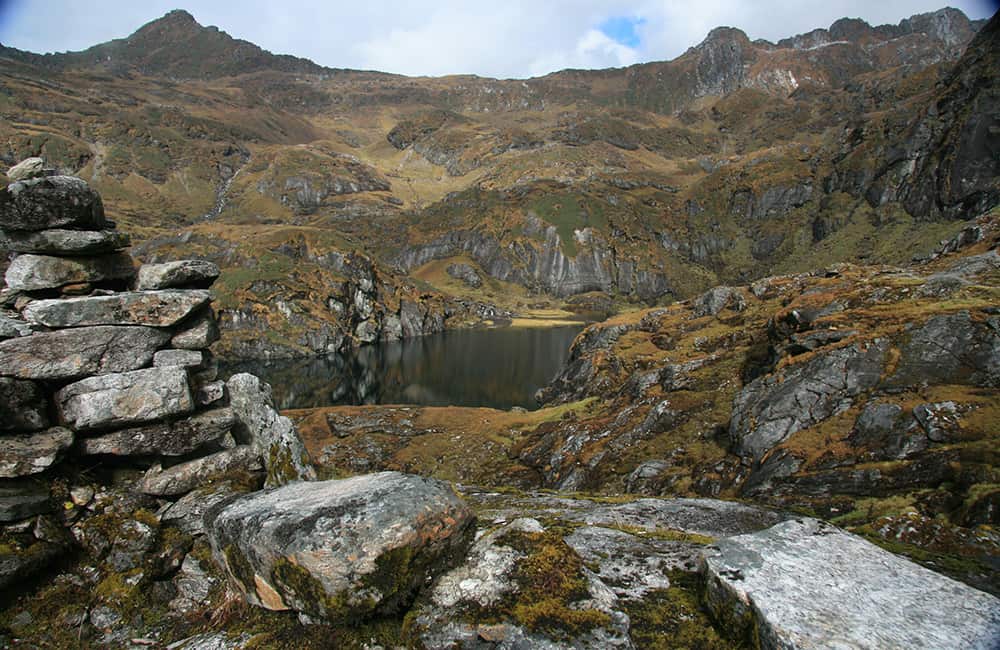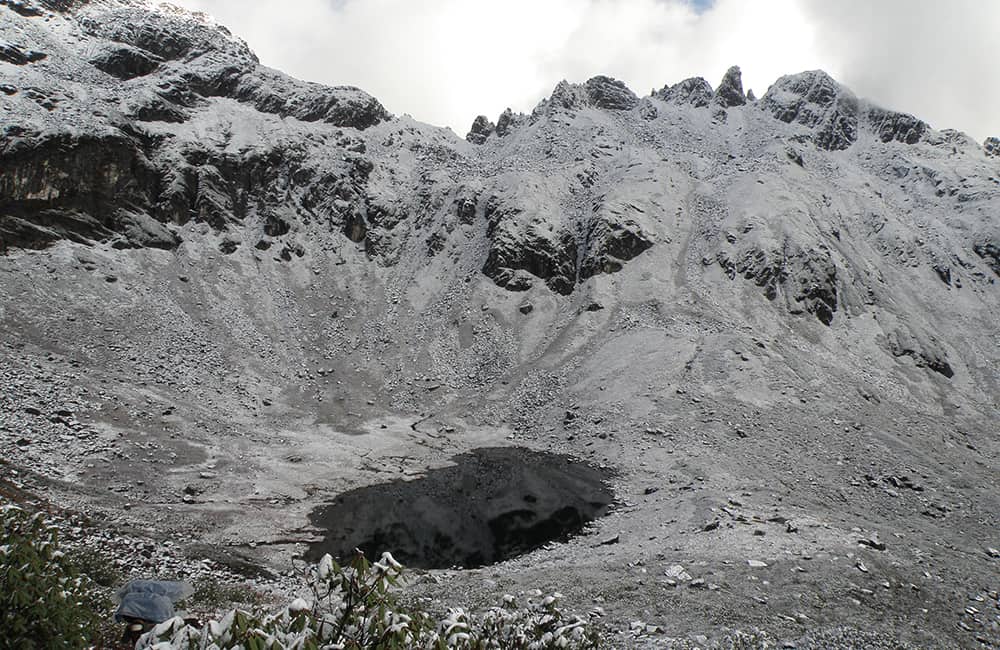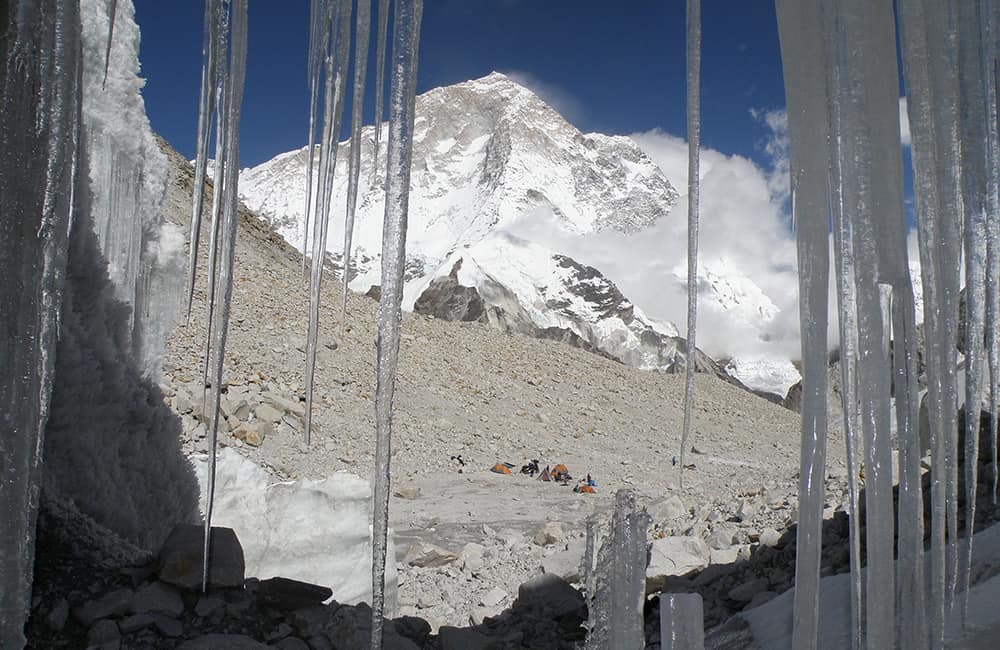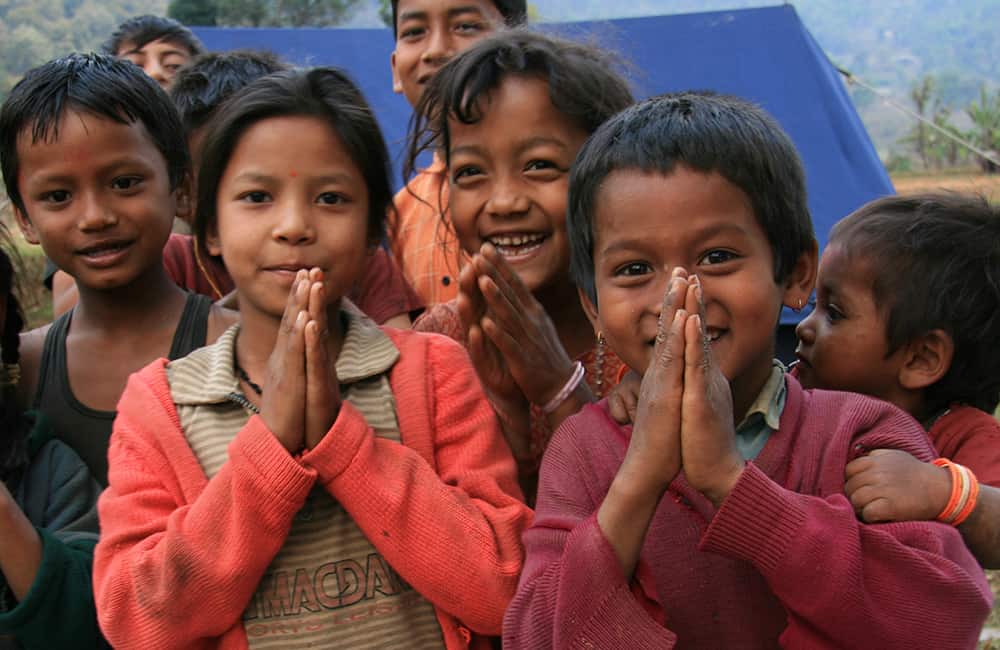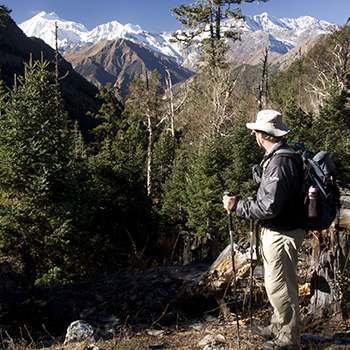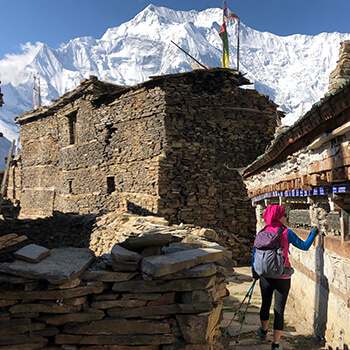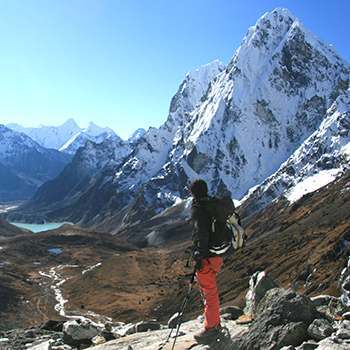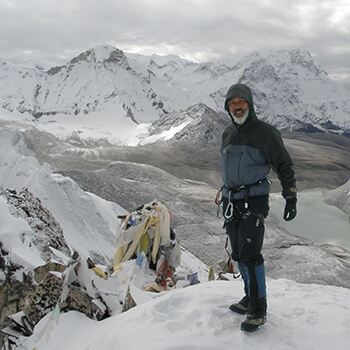Makalu Base Camp
Makalu Base Camp Trek
If you love mountains, the Makalu Base Camp Trek is for you! A fantastic Himalayan wilderness experience, towering cliffs, hanging glaciers and Mt Makalu!
Stand at the foot of the massive bulk of a 3000m rockface at Makalu Base Camp. Cross Himalayan passes, wander through old-growth rhododendron and pine forests, and relax in picturesque and welcoming Rai and Sherpa villages.
Key points:
- Trekking Grade: Grade 4 Energetic
- Duration & distance: About 15-35 days total.
- Gradient: Some steep and arduous sections
- Quality of path: Formed & rough tracks, some obstacles
- Quality of markings: Limited signage
- Experience required: Some walking experience required
- Walking times: Less than 7½ hours per day
- Steps: Many steps
- Highest point: 4825m
- Best season: Apr-May/Oct-Nov
- Accommodation: Camping or basic teahouses
- Recommended map: NP102 GHT Series Makalu Region, Himalayan Map House, 2017
- Recommended Guide Book: Nepal Trekking and the Great Himalaya Trail, Trailblazer, 2020.

GRADE 4
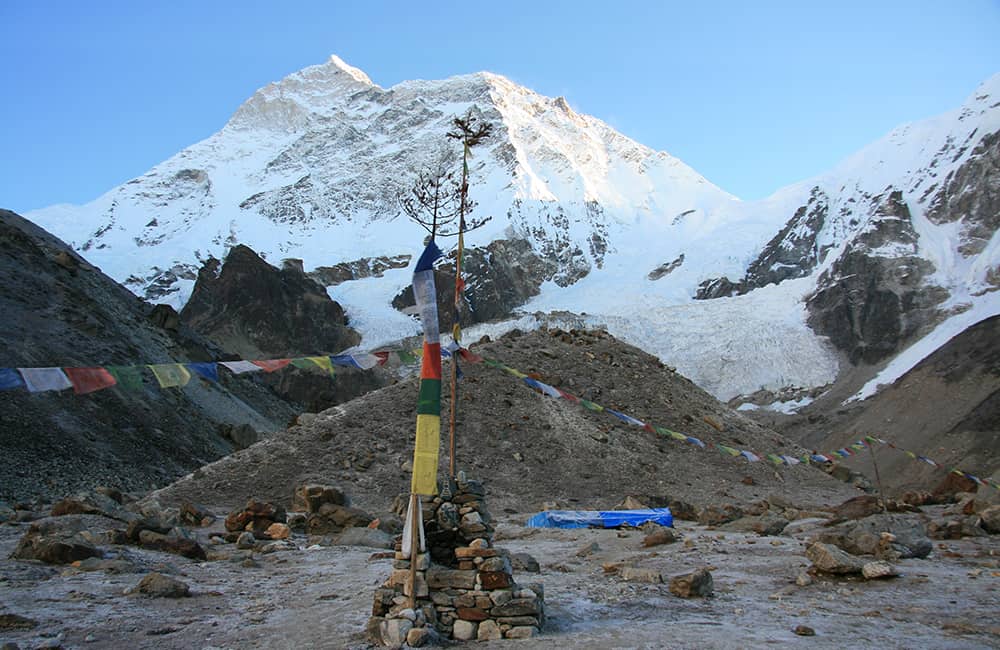
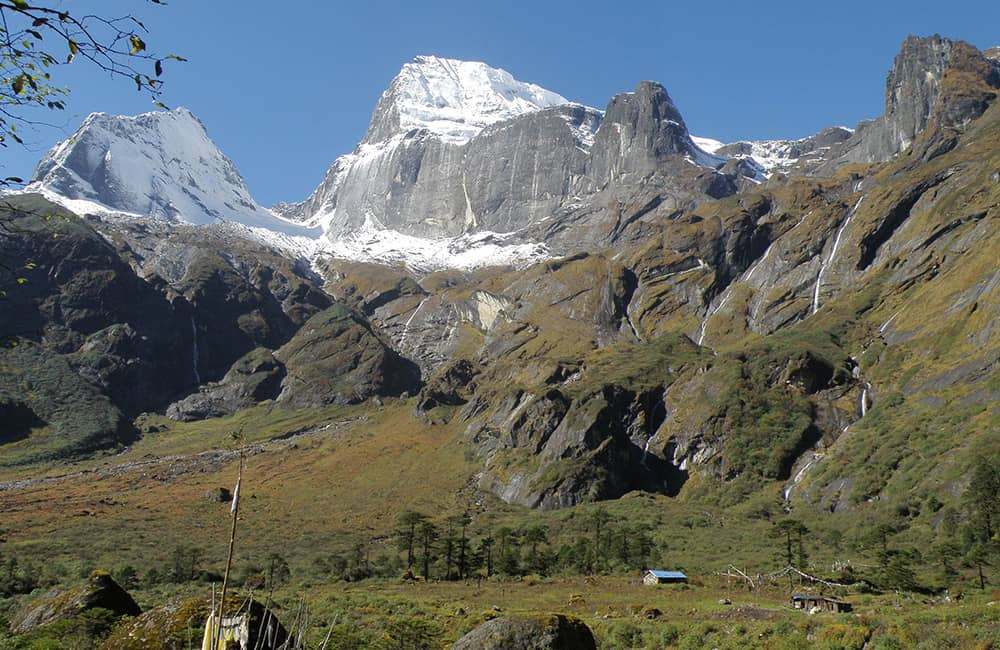
When to Trek Makalu Base Camp?
Like many mountain regions in Nepal, the best time to visit Makalu Base Camp is during the main trekking seasons of April-May or October-November.
Throughout winter (December to March) and the monsoon (June to mid-October) the Arun Nadi and Barun Nadi valley systems funnel wet weather towards Mt Makalu. This can dump large amounts of snow on the both the Khongma Danda and Shipton’s Pass (aka Tutu La), closing them. During the pre-monsoon spring season the extensive rhododendron and orchid forests that cover the Khongma Danda bloom in a multitude of colours. The clear air of the post-monsoon period makes for some excellent mountain photography. It is also the best time of year to cross the high passes to the Solu-Khumbu (Everest) region.
There are several scheduled flights a day between Tumlingtar and Kathmandu, and Tumlingtar and Biratnagar, as well as bus services. If you cross to the Everest region make sure you have purchased your flight tickets out of Lukla, as there can be long waiting lists in October.
Makalu Base Camp Trek Route Options
The return trek to Makalu Base Camp takes about 15 days if you jeep from Tumlingtar to Num and return the same route.
However, the Makalu Barun National Park is enormous and you could easily create a longer mountaineering route across the high passes to the Solu-Khumbu (Everest region) via the Amphu Labsta. Another option is by descending the Honku Khola or Isuwa Khola. Both of these routes can eventually take you to Lukla where you can either fly to Kathmandu or take the trail to Jiri. If you are returning to Tumlingtar from Makalu Base Camp, consider the pretty riverside trail along the Arun Nadi instead of retracing your steps via Num.

GHT Makalu Treks
GHT through-hikers have a simple choice in the Makalu region. To go over the high passes, or take a southerly route along the Arun-Salpa Trail. Routes can also include heading up the Arun Nadi to Thudam or continuing directly to Taplejung.
Milke Danda and Kimathanka
One of the least-visited regions in the Himalaya is the Milke Danda. It’s a long ridge that runs south from the Lumbha Sambha and is covered in rhododendron forests, alpine lakes and craggy peaks. The ridge almost bisects eastern Nepal and in the heart of the region is Topkegola, a community renowned for trade with Tibet and India. From Taplejung, it is only a two-day hike from the road-head at Papung to reach Topkegola and another two days to Thudam. Trails across the Milke Danda link Dobhan with Khadbari via Chainpur (5-6 days, village-to-village route) and Jaljala Pokhari (6-8 days, a tough wilderness route with very tricky navigation).
Kimathanka lies beside the upper Arun Nadi on the border with Tibet. From Tumlingtar, it takes 10-12 days to reach and return from the most isolated district centre in Nepal.
Arun-Salpa Trek
The Arun-Salpa Trek is one of the new trekking gems of the lower Solu region and a low route option to avoid the high passes. It is a 8- to 10-day village-to-village route (Grade 3) between the Arun Nadi and Kharikhola/Lukla via Salpa Bhanjyang. The trail follows an old trade route used by Sherpas visiting Sikkim. The trail offers some wonderful views and immersion in a range of hill cultures but is slowly being turned in road. A typical itinerary is: Lukla, Kharikhola, Panggom, Sibuje, Khiraule, Bung/Cheskam, Gudel, Salpa Pokhari, Silicho Danda, Dobhane and Baluwabesi to Tumlingtar.
Apsuwa and Isuwa Khola
For those who want a wilderness challenge, the routes along the Apsua Khola and Isuwa Khola lead into the heart of the National Park. The Isuwa Khola route crosses to Shershong, just below Makalu Base Camp. Whereas the Apsua Khola system leads to the Honku Khola and routes to and around Mera Peak.
If you would like further information regarding route options, please Get in Touch.
How Much does the Makalu Base Camp Trek Cost?
To help you budget and plan, we’ve made a comprehensive costing explanation on How Much Does the GHT Cost? But here’s a simplified breakdown.
GHT Makalu Base Camp Trek for 15-days estimated costs:
- Solo as much as possible US$1,525.
- Twin-share with minimum guiding US$1,525 per person.
- Twin-share fully supported US$3,625 per person.
Do you have any questions about costs? Please Get in Touch for more details.
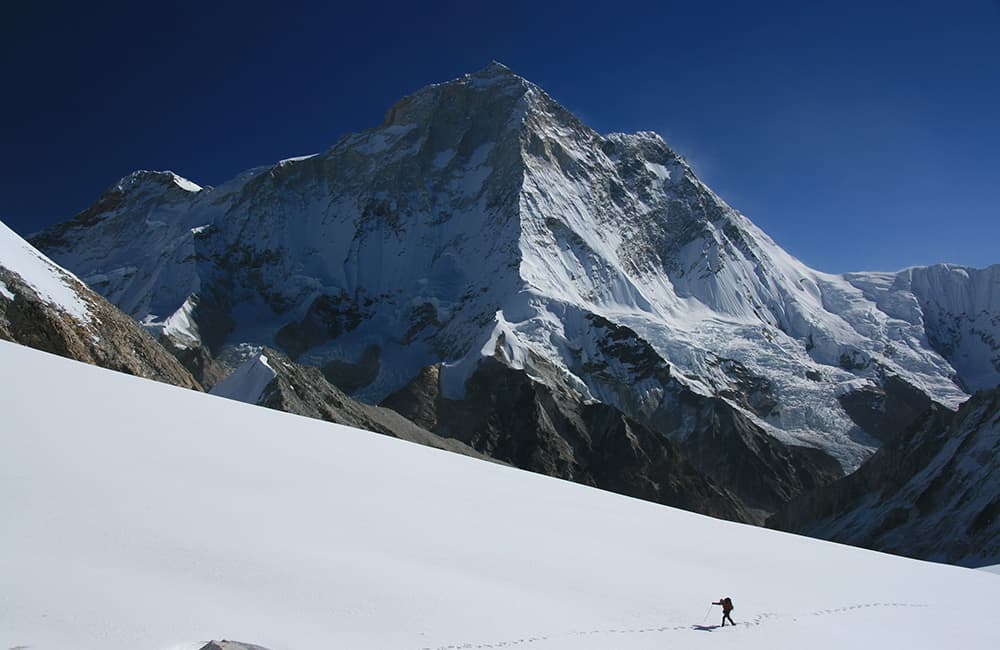
Customisation is Normal
Want to do things a little differently? Maybe take some extra time, or go a bit faster? Or avoid technical sections or combine with other trails? Every GHT trek is different and that changes the price, but please feel free to Get in Touch to ask questions and how to customise your own trek.
Bookings
Please note that www.greathimalayatrail.com does not handle bookings for treks. We are here to inform you about the trails and logistics, but you will need to book through a registered trekking operator in Nepal. If you would like an operator recommendation or feedback on a company you are already talking to, then please Get in Touch.
Your Impacts on the Makalu Base Camp Trek

Solo (Independent)
Although there are teahouses each day on the main route, maybe think about taking some camping gear to explore some side trips?
That way, you will increase your social impact by purchasing food and fuel from locals.


Twin Share (Independent)
Although there are teahouses each day on the main route, maybe think about taking some camping gear to explore some side trips?
That way, you will increase your social impact by purchasing food and fuel from locals.


Camping (supported)
Although you don’t really need a camping crew for the Makalu Base Camp trek it would be good to have greater freedom to explore.
However, you need to make sure that you purchase as many supplies as possible from locals.

For more information about social, Green House Gas and waste impacts of treks, see The Impact of your Trek.
-
Destination
-
DepartureKathmandu
-
Dress CodeMid to high-altitude alpine clothing and camping equipment required
-
IncludedMakalu Base Camp
-
GradeGrade 4
-
Idea Date Range15/10/2021
-
Style of TrekTeahouse or camping









